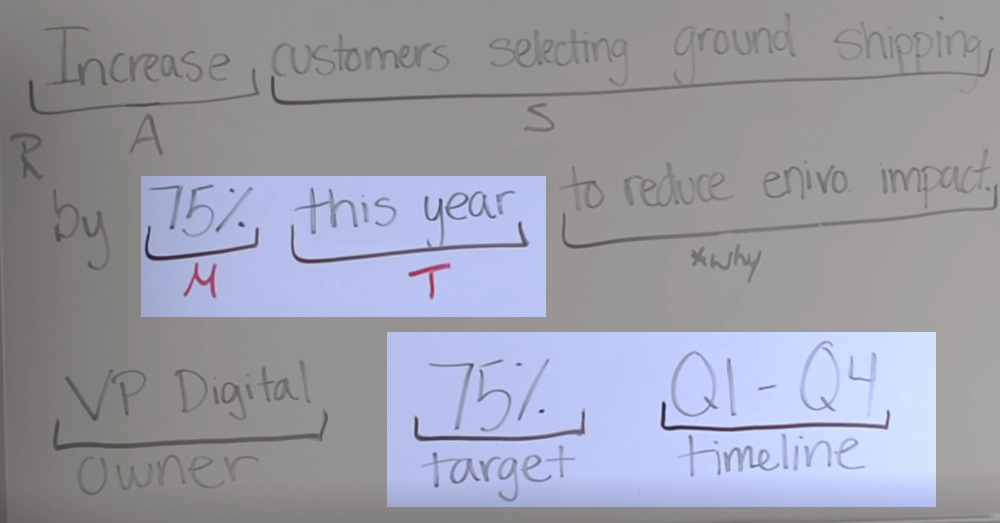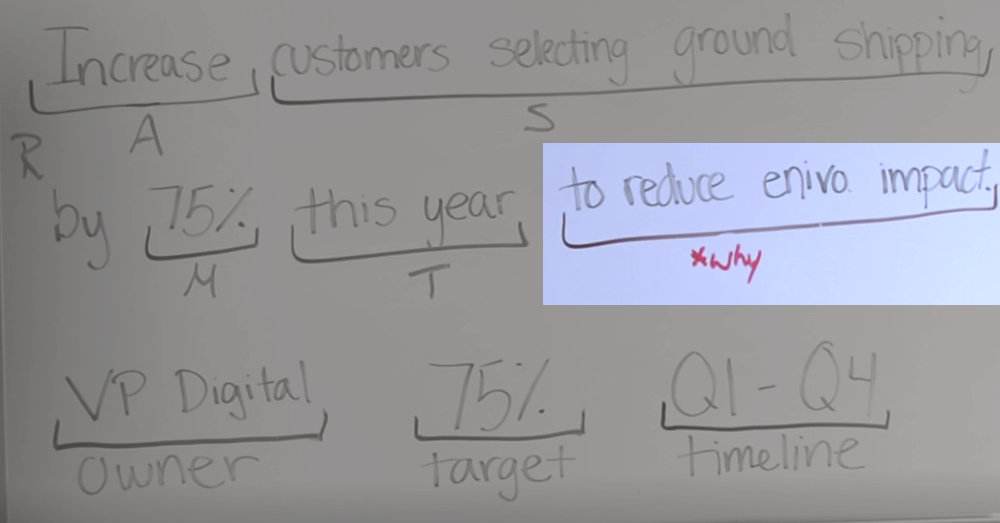If you really want to achieve a goal, set one that is SMART. Good goals should be Specific, Measurable, Actionable, Responsible (person), and Time-bound. Watch this Whiteboard session to learn additional best practices in goal setting as well as see examples of SMART goals in action.
For more resources on building your strategic plan, view the Essentials Guide to Strategic Planning.
Video Transcript
Today’s whiteboard session is on how to write SMART goals. I’ll walk you through where goals live in a planning hierarchy, and then how to write great, meaningful SMART goals for your organization. Let’s jump in.
Get the Free Guide for Writing Better SMART Goals
We’re using the terminology “goals” in this particular video to articulate the statements in your plan short-term in nature. These goals are 12-24 months-ish and have outcome statements built into them.

They live in-between strategic objectives or strategic priorities, which are the broad statements that make up the framework of your plan and cascade into your short-term items. Shorter-term items are initiatives and action items less than 12 months in nature. You might use different words for this particular part of your plan. Either way, what we really care about is that there are outcome statements within the goals
We’re using the acronym SMART because it works and it helps us write great goals. It’s a little bit overdone, so we added a bit of a twist on it. But use it, and it’s proven to work. Let’s spell it out:
S stands for specific.
M, measurable.
A, actionable.
R, realistic.
And T, time-bound, with a little asterisk. We’ll get to that in a minute.

Now let’s apply it. I’m going to take it a little bit out of order and build the goal, starting with increase, which is our A (action). We like to see goals start with verbs that have motion. Action verbs are necessary here.

Specific, we want to know what the goal means when we read it again in a month or two months. Clarity over brevity.

Measurable, numbers are measurable. Use them if you have them. This is your outcome-based area in your goal statement.

T, time-bound. These two need to work together, this outcome in this time frame.
And then R is that the whole goal statement is realistic and doable.

And our little twist over here? This is our “why.” Don’t over-smart your smart goals. Have a little heart, a little passion. Why is this goal important? Make sure to add a phrase that explains that.
As a final note, smart goals also have a meaningful commitment with the following items:
- Somebody owns it,
- We’re really clear about what success looks like.
- We’re clear about when success is going to be achieved.
That’s all we have for today. I hope this helps you write smart goals for your organization. Happy strategizing!













Hi…..any thoughts on how to create a “corporate strategy”…..I’m referring to a strategy formulated by a company that has multiple business units. Thanks.
Is Goals and Objectives same ?
As far as I know-
Goals – are for longer terms
Objectives – are for shorter terms
Objectives – are qualitatives. Having numbers in Objectives are good or bad ?
Please clarify